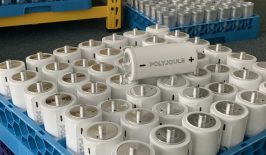The environmental impact of construction waste is diverse and abundant.
Ecosystem destruction, natural resource consumption, pollution creation — it has all the hallmarks of a bonafide ecological menace. In fact, the construction industry accounts for roughly one-third of all waste globally. Much of it manifests at the tail end, in the form of demolition debris.
A multi-faceted challenge on this scale requires a multi-faceted solution. Using sustainable materials is a good start. Meanwhile, resources like concrete, wood, metals, plastics and bricks should be reused or recycled. So should used tires and even diapers. Finally, unsalvageables should be given a circular lifespan.
Here’s where fungi can help. Just as fungi can contribute to the construction of a building, it can also play a part in its eventual breakdown.
Mushrooms can make a meal of almost anything — including demolishion debris
We all know fungi is great at breaking down organic matter. Less known is that mycelium, a root-like structure of fungal threads, produces an enzyme that is also capable of degrading man-made chemicals.
In April, researchers at the University of Sydney deployed two common strains of fungi to successfully biodegrade polypropylene (PP), a plastic used in everyday products like food containers, coat hangers and cling film. While PP is an easily recyclable material, only about 1 percent of it is actually recycled globally. The hope is that by shifting recycling processes closer to the source, rather than depending solely on centralised recycling centres, we can significantly improve the recycling rate for materials like PP.
Do Fungal Circuit Boards Hold the Key for E-Waste Recycling?
Mushrooms are the forests’ great recyclers, but can they also help reduce electronic waste? A team of researchers developed a new material from the humble forest mushroom which could be used to replace plastic circuit boards in certain electronics.
Beyond plastic, mycelium has also shown to break down common construction materials like asphalt, carpet, rubber and gypsum.
Turning waste into a valuable resource
The process involves introducing specific fungi to construction waste, where the mycelium grows, secretes enzymes and breaks down materials into simpler compounds. The mycelium absorbs these nutrients, forming a mat that can be shaped into sustainable biomaterials for construction, insulation and other applications. The process aligns with circular economy principles by repurposing waste into valuable resources.
One company leading the charge is Mycocycle. The U.S.-based startup is particularly focused on breaking drywall down into reusable biomaterials. In a pilot project, mycelium was trained to consume drywall waste at a Metadata centre in Gallatin, Tennessee. The broken down and hardened matter can then be re-purposed as filler material, insulation panels and acoustic panels. Not only is the mycelium composite durable enough to replace plastic materials, it is also fire- and water-resistant. These properties make it suitable for use in building construction, particularly as cladding material.
Mycelium’s potential in waste transformation illustrates a pioneering step towards addressing demolition debris in the construction industry. Currently, only two-thirds of construction and demolition waste is directed at next use. The rest is discarded in landfills. Further advancements in the field of circular mycelium can contribute to an even better ratio.
Buildings are a CO2 heavyweight: the construction, heating, cooling and disposal of our homes accounts for around 40 percent of Germany’s CO2 emissions. We will only achieve our climate goals if these emissions are massively reduced.
But how can we achieve the sustainable transformation of buildings and what role do digital solutions play in this? The RESET Greenbook provides answers: Building transformation – intelligently transforming houses and neighbourhoods.










